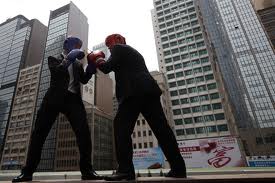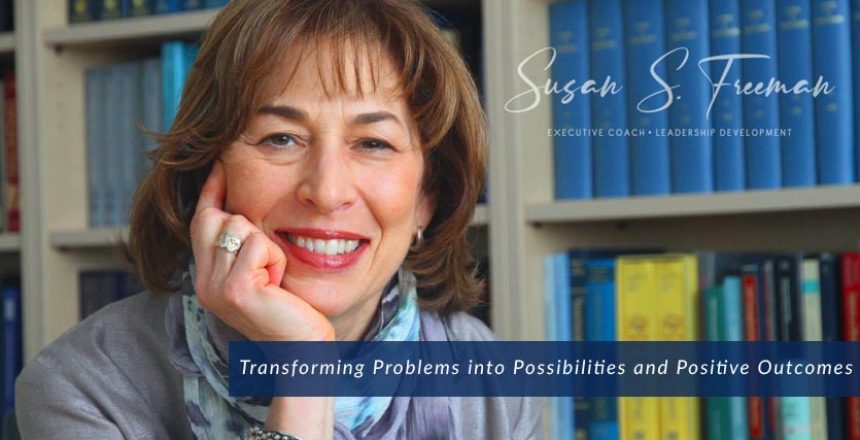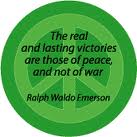 Our theme for March is “Are You an Emotionally Competent Leader? We have been exploring this topic via interactive quizzes in which you get to gauge where you are on the spectrum.
Our theme for March is “Are You an Emotionally Competent Leader? We have been exploring this topic via interactive quizzes in which you get to gauge where you are on the spectrum.
This week we explore emotional competency through skill at managing conflict.
It’s a fact of life in our world today: Conflict, like taxes, is inevitable. This isn’t all bad. Naturally people are going to have differing points of view. Sometimes conflict and the resolution that arises, can result in a closer bond between two people or more complete understanding of a situation by a group.
Conflict may arise over small issues or major problems and the way leaders handle conflict helps determine whether those small issues are transformed into Major Problems.
 The bullies of the world seem to enjoy conflict, coming at it head-on. They’re aggressive on the freeway, surly to service people and argumentative with co-workers. Other people avoid conflict at all costs; never speaking up for themselves, always backing down. They are the doormat everyone walks upon.
The bullies of the world seem to enjoy conflict, coming at it head-on. They’re aggressive on the freeway, surly to service people and argumentative with co-workers. Other people avoid conflict at all costs; never speaking up for themselves, always backing down. They are the doormat everyone walks upon.
A leaders’ approach to conflict resolution can make life easier or tougher for their teams and organizations. Take a look at the following questions to find out how you respond in conflict situations.
1. When confronted by an angry or hostile person, I take a moment and consider my response, rather than reacting in kind or defensively.
__Always __ Often __Sometimes __Never
2. When conflict occurs, I clam up and become non-communicative, quiet and passive, hoping it will dissipate.
__Always __ Often __Sometimes __Never
3. I try to see my part in the situation and am willing to take responsibility for it instead of blaming others or denying any responsibility.
__Always __ Often __Sometimes __Never
4. Whenever conflict rises, I get sick. The bigger the conflict, the more drastic my symptoms become.
__Always __ Often __Sometimes __Never
5. During a conflict, I stay with the issue at hand rather than bringing up the past or changing the subject.
__Always __ Often __Sometimes __Never
6. I’m open to exploring different options for resolution instead of insisting on having my way. I listen to what others say with an open mind.
__Always __ Often __Sometimes __Never
7. I pay attention to what’s being said behind the words spoken which might have nothing to do with the issue at hand. I ask for clarification when I don’t understand something.
__Always __ Often __Sometimes __Never
8. I try to avoid conflict by saying there’s no problem or that nothing’s wrong when asked. I downplay even small problems.
__Always __ Often __Sometimes __Never
9. I establish boundaries during conflicts and don’t ever verbally or physically abuse others.
__Always __ Often __Sometimes __Never
10. When a resolution can’t be reached by those involved, and “agreeing to disagree” isn’t an acceptable solution, I’m willing to consult with someone from neutral territory to help resolve the situation.
__Always __ Often __Sometimes __Never
In my new book “Step Up Now: 21 Powerful Principles for People Who Influence Others,” there is a chapter about conflict entitled “ Be at Peace, Not War.”
My experience is that many of us are continually “at war.” Perhaps not in the physical sense, but we are continually putting others in a box. According to The Arbinger Institute in their phenomenal book “The Anatomy of Peace: Resolving the Heart of Conflict,” this comes from the notion of “collusion.”
 The theory is that “when I betray myself, my own true nature, I become self-deceived. Then I inflate others’ faults. As a result, I inflate my own virtue. Then I inflate the value of things that help justify my self-betrayal. In the end, I blame the other.” We provoke each other to do more of what we say we DON’T like about the other. This is what is called “being in the box.”
The theory is that “when I betray myself, my own true nature, I become self-deceived. Then I inflate others’ faults. As a result, I inflate my own virtue. Then I inflate the value of things that help justify my self-betrayal. In the end, I blame the other.” We provoke each other to do more of what we say we DON’T like about the other. This is what is called “being in the box.”
Look at your score from the quiz and ask if you are “in the box.” If so, I invite you to consider taking action right now to improve your skill in this important area. You can start with reading the two books mentioned above. For a deeper, more individualized process, I invite you to visit my website for a free 30-minute “Break Through Your Barriers Strategy Session.”


